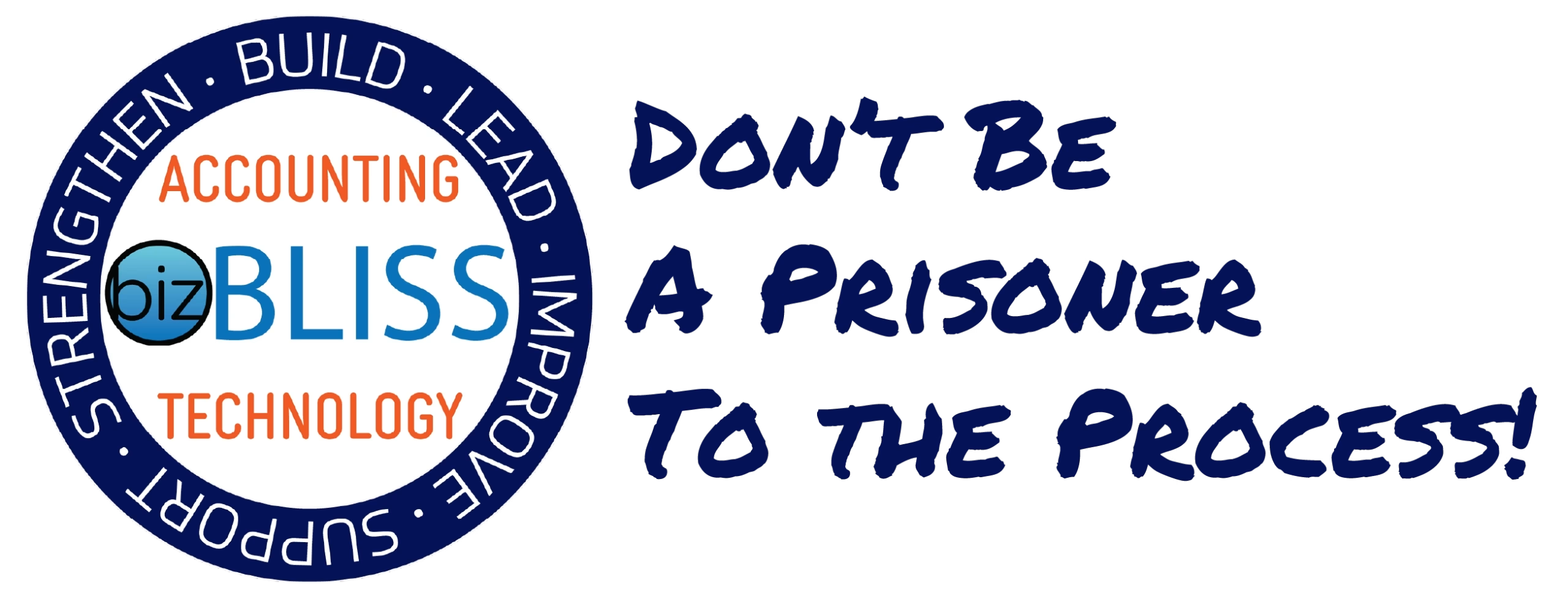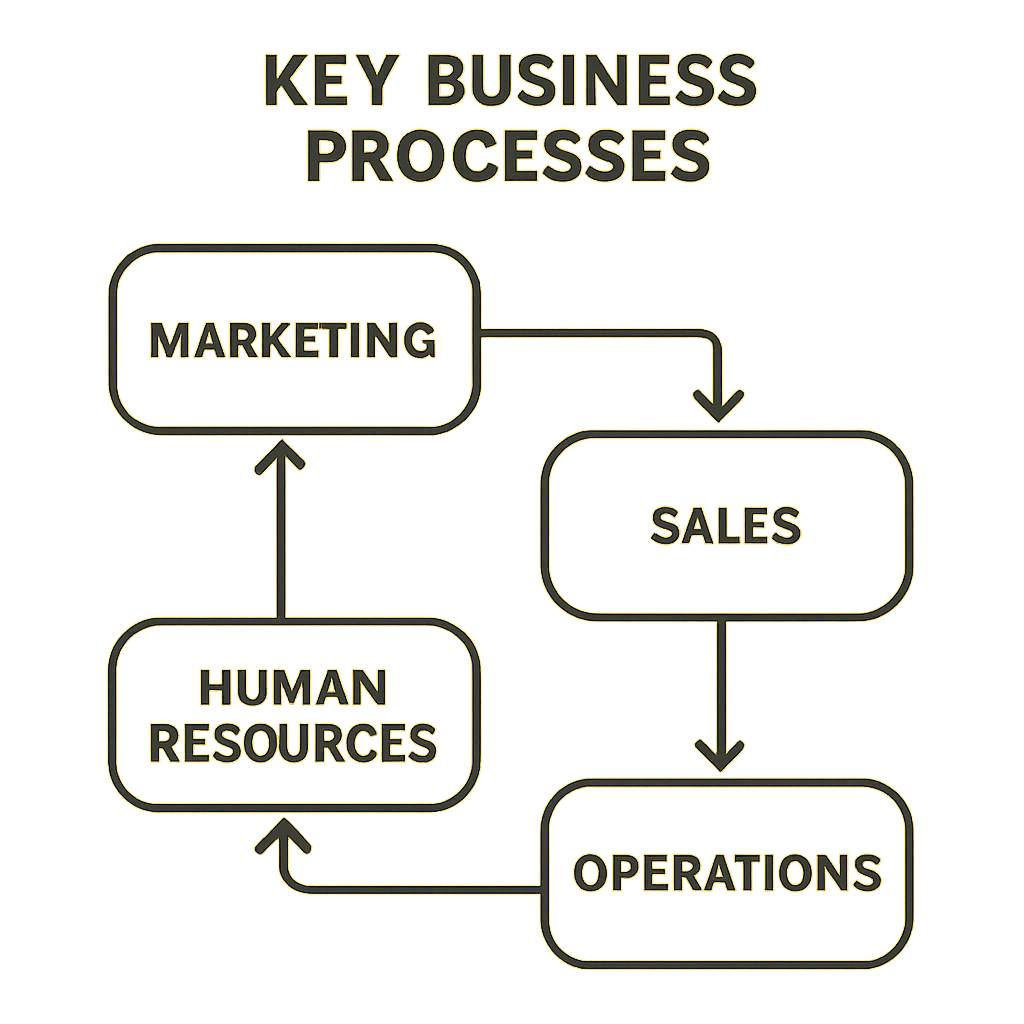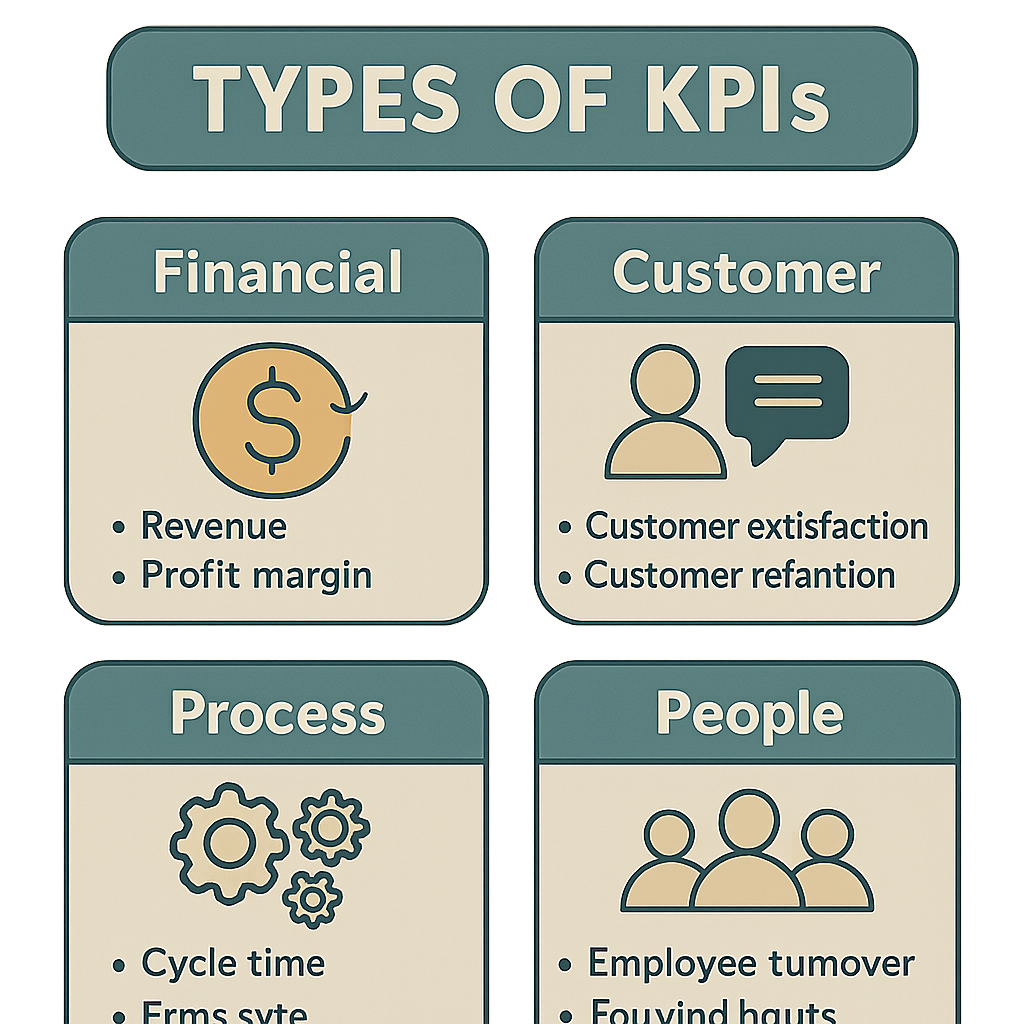How to Measure Internal Process Effectiveness

In today’s fast-paced business world, measuring internal process effectiveness is crucial. It helps businesses stay competitive and efficient. But how do you measure something so complex?
Key Performance Indicators (KPIs) are the answer. They provide a clear picture of how well your processes are performing. KPIs are essential for aligning business goals with operational activities.
Understanding KPIs can transform challenges into growth opportunities. They help identify areas for improvement and innovation. This guide will explore how to develop and use KPIs effectively.
We’ll cover the basics of KPIs, their types, and how to write them. You’ll learn to create KPIs that are specific, measurable, and achievable. We’ll also discuss tools and techniques for tracking KPIs.
Whether you’re a small business owner or a tech consultant, this guide is for you. It will help you integrate people, numbers, and technology. Let’s dive into the world of KPIs and unlock your business’s potential.
Understanding Internal Processes and Their Importance
Every business comprises numerous internal processes. These processes define how tasks are executed and objectives are achieved. Understanding them is pivotal for smooth operations and growth.
Internal processes include everything from product development to customer service. Each process must function optimally to support the overarching business strategy. Identifying these processes is the first step towards efficiency.
Business processes can be broadly categorized into the following:
- Operational processes (e.g., manufacturing, logistics)
- Supporting processes (e.g., human resources, IT)
- Management processes (e.g., strategy planning, compliance)
A clear grasp of these processes allows businesses to pinpoint inefficiencies. It also aids in aligning operations with corporate goals. Streamlining these processes translates to cost savings and improved performance.
Efficient processes foster agility and responsiveness. They prepare businesses to adapt to ever-changing market conditions. By continuously refining internal processes, businesses can enhance their competitiveness and sustainability.
Ultimately, understanding internal processes forms the backbone of robust business operation. It lays the groundwork for deploying effective KPIs. Through this understanding, businesses can better harness resources for optimal performance.
What Are KPIs? Definition, Purpose, and Types
Key Performance Indicators (KPIs) are metrics used to assess success. They help measure how effectively a company achieves its objectives. KPIs offer insight into various aspects of business performance.
The purpose of KPIs is multifaceted. They guide decision-making, monitor progress, and highlight areas needing improvement. They make abstract goals tangible and trackable.
There are diverse types of KPIs, each with specific roles. Understanding these is crucial for tailoring them to business needs. Commonly used KPIs include:
- Financial KPIs (e.g., profit margins, revenue growth)
- Operational KPIs (e.g., production efficiency, order fulfillment time)
- Customer KPIs (e.g., satisfaction, retention rates)
Using the correct type of KPI provides clear insights. It ensures alignment with strategic objectives and helps track progress over time. Each type holds a unique spot within a company’s framework.
Effectively leveraging KPIs involves choosing relevant metrics. These should accurately reflect your organization’s priorities. Properly selected KPIs act as a compass, guiding businesses toward their desired outcomes.
Key Performance Indicators vs. Key Performance Measures
Key Performance Indicators (KPIs) and Key Performance Measures (KPMs) are often confused. Despite their similarities, they serve distinct purposes. KPIs focus on strategic objectives, while KPMs measure specific actions.
KPIs help in visualizing long-term goals. They offer a broader view of a company’s strategic achievements. On the other hand, KPMs provide detailed insights into daily operations and processes.
Understanding these differences is crucial for effective measurement. Here’s a simple differentiation:
- KPIs: Gauge strategic success (e.g., market share growth)
- KPMs: Assess operational activities (e.g., units produced per hour)
Choosing between KPIs and KPMs depends on the intended focus. KPIs suit strategic planning, while KPMs are useful for monitoring efficiency and operations. Recognizing this helps align measurement tools with business priorities, ensuring accurate performance evaluation.
Identifying Key Process Indicators for Quality and Efficiency
Identifying Key Process Indicators (KPIs) tailored to quality and efficiency is pivotal. These indicators help gauge whether processes are effective and meet set standards. Without them, it’s challenging to align operations with quality goals.
To start, assess critical operations that influence quality and efficiency. Consider both output quality and resource utilization. This analysis assists in picking indicators that reflect process success. Tailored KPIs ensure targeted improvement in essential areas.
Common Key Process Indicators include:
- Cycle Time: Duration to complete a process
- Defect Rate: Number of errors in production
- Resource Utilization: Optimal use of available resources
Selecting suitable KPIs involves understanding your unique business priorities. For some, reducing defects may be vital. For others, optimizing resource use or shortening cycle times can be crucial.
By focusing on quality and efficiency, you improve operational standards. A well-crafted KPI strategy not only enhances processes but also supports overall growth goals.

How to Write Effective KPIs: The SMART Approach
Crafting effective KPIs requires a structured approach. A popular method is the SMART criteria. SMART stands for Specific, Measurable, Achievable, Relevant, and Time-bound. This framework ensures KPIs are clear and practical.
Specific KPIs target precise areas of improvement. They answer “what,” “why,” and “how” questions about the process. Precision helps eliminate ambiguity.
Measurable KPIs incorporate clear criteria for tracking progress and outcomes. Quantifiable metrics are easier to monitor, helping gauge success effectively. Using numbers allows a clear view of achievements.
Achievable objectives ensure goals are realistic, avoiding setting the bar too high. KPIs should stretch capabilities but remain attainable.
Relevant KPIs align with broader business objectives. They ensure every metric supports overarching goals, making each action purposeful. This alignment keeps efforts focused and meaningful.
Time-bound KPIs include deadlines to instill urgency. Time frames encourage consistent progress and facilitate regular reviews for adjustments.
By adhering to the SMART framework, businesses create insightful, actionable KPIs. These well-crafted indicators guide teams towards continuous improvement.

Steps to Create and Implement KPIs for Internal Processes
Establishing KPIs begins with understanding the needs of your internal processes. Identifying these processes can reveal areas requiring performance indicators.
Initial Steps to Define KPIs
- Analyze Business Goals: Begin by aligning KPIs with your overarching business objectives. Understand what you aim to achieve.
- Identify Key Processes: List processes crucial to meeting your business goals. Focus on areas with the most significant impact.
- Consult Stakeholders: Engage with staff and stakeholders to gather insights on process performance. They can provide valuable observations.
Developing Effective KPIs
- Set Clear Benchmarks: Determine what success looks like for each process. Clear benchmarks guide the formation of KPIs.
- Draft KPIs Using SMART: Use the SMART criteria to draft each KPI. This ensures they remain focused and result-driven.
Implementing and Monitoring KPIs
- Communicate KPIs Clearly: Share KPIs with all relevant teams. Their clarity and purpose must be understood by all involved.
- Utilize Technology Tools: Leverage digital tools for tracking KPI performance. These tools simplify data collection and analysis.
Implementation is an iterative process. Adjust KPIs as business needs evolve to maintain their relevance and effectiveness.
Regular reviews help adapt KPI strategies to dynamic market conditions, ensuring ongoing alignment with business growth.

Examples of Good KPIs for Internal Process Effectiveness
Effective KPIs provide concrete insights into process performance. They enable you to assess efficiency and drive improvements.
A successful KPI is quantifiable and aligns with business objectives. It should offer clear, actionable insights for stakeholders.
Sample KPIs for Internal Processes
- Cycle Time Reduction: Measures the time taken to complete a process from start to finish.
- Error Rate: Evaluates the frequency of mistakes within a process, aiming to decrease over time.
- Resource Utilization: Assesses how effectively resources, like people or equipment, are used.
Selecting the right KPIs depends on the specific objectives of each process. Tailor them to address unique operational requirements.
As your business evolves, continually refine KPIs. This adaptability helps ensure they remain relevant and informative for ongoing success.

Measuring and Tracking KPIs: Tools and Techniques
Effective KPI tracking is vital for refining business processes and achieving goals. Tools and techniques streamline this effort.
Firstly, choose software that integrates smoothly with existing systems. This ensures seamless data flow, minimizing manual input errors.
Software options range from simple spreadsheets to advanced analytics platforms. Each offers unique features based on business scale and need.
Essential Tools for KPI Measurement
- Dashboards: Visualize data trends and insights in real-time.
- Analytics Tools: Provide deep data analysis, helping to reveal patterns.
- Reporting Software: Generates custom reports to share with stakeholders.
Regular monitoring of KPIs allows businesses to adapt strategies quickly. By identifying trends, businesses can foresee challenges and opportunities.
It’s also important to review and update KPIs periodically. This ensures alignment with evolving business objectives and market dynamics.

Using KPIs in Project Management, Marketing, and Sales
Key Performance Indicators (KPIs) are powerful tools across various business functions. They provide critical insights and guide decision-making.
In project management, KPIs like project deadlines and budget adherence are vital. They help in monitoring progress and resource allocation.
Marketing benefits from KPIs such as customer acquisition cost and conversion rates. These indicators assess the effectiveness of marketing campaigns.
Sales teams use KPIs to evaluate performance and strategize better. Metrics like sales growth and customer churn inform sales strategies.
Key KPIs in Different Domains
- Project Management: Timeline, Budget Variance, Resource Utilization
- Marketing: ROI, Lead Conversion Rate, Brand Awareness
- Sales: Revenue Targets, Customer Retention Rate, New Customer Growth
By using KPIs strategically, organizations can enhance alignment and performance across projects, marketing initiatives, and sales operations.

Interpreting KPI Results and Driving Continuous Improvement
Interpreting KPI results is vital to understanding a business’s performance. It involves analyzing the data and discerning patterns.
Once the KPIs are analyzed, businesses must identify areas for enhancement. Continuous improvement relies on this in-depth analysis.
For effective interpretation, start by comparing results against pre-set benchmarks. This helps gauge where the business stands.
A consistent review and adjustment of KPIs ensure relevance. This practice fosters a culture of ongoing improvement.
Key Steps for KPI Interpretation
- Analyze data trends and patterns.
- Compare results to business goals.
- Identify improvement areas.
- Adjust KPIs for accuracy and relevance.
These steps help businesses turn insights into actionable strategies. Continuous improvement becomes a natural part of the business culture.
Common Challenges and How to Overcome Them
Implementing and measuring KPIs pose unique challenges. Businesses often struggle with selecting the right indicators.
Another issue arises with data collection. Capturing accurate and timely data can be daunting.
Overcoming these challenges requires a strategic approach. Clear communication and training help in aligning objectives.
Strategies to Tackle Challenges:
- Select Relevant KPIs: Align them with business goals.
- Enhance Data Accuracy: Invest in reliable tools.
- Foster Collaboration: Encourage team involvement for better integration.
These strategies empower businesses to navigate hurdles effectively. By focusing on these solutions, companies can ensure smooth KPI implementation and measurement.
Integrating People, Numbers, and Technology for Holistic Measurement
A well-rounded approach to measuring internal process effectiveness integrates people, numbers, and technology. Each element plays a crucial role in the success of the operation.
People bring human insight and adaptability to the table. Their feedback offers a practical perspective on process efficiency. Engaging your team in discussions about process improvements fosters a culture of collaboration.
Numbers provide the data-driven foundation necessary for accurate assessments. Rely on metrics to highlight performance gaps and guide decision-making. Data reveals patterns that human intuition might miss.
Key Integration Strategies:
- Leverage Technology: Use analytics software for precise measurement.
- Encourage Team Input: Maintain open channels for feedback.
- Combine Insights: Balance quantitative metrics with human insights.

By blending these elements, businesses achieve a comprehensive view of their processes. This holistic approach ensures informed decisions, driving continuous improvement.
Conclusion: Turning Process Measurement into Growth Opportunities
Understanding internal process effectiveness offers tremendous growth potential. Identifying inefficiencies becomes the first step toward improvement. Analyzing processes with precision uncovers hidden opportunities. Each challenge reveals valuable insights.
With the right tools and strategies, businesses transform obstacles into success. KPIs help identify what’s working and what’s not. Continuous improvement becomes a natural process, driving innovation.
Key Takeaways:
- Embrace Transparency: Clear visibility of processes fosters improvement.
- Adapt Strategies: Modify approaches based on KPI results.
- Encourage Innovation: Use insights for creative solutions.
Businesses that excel in measuring effectiveness don’t just survive; they thrive. By viewing process measurement as a growth opportunity, they ensure consistent advancement. It’s not just about measurement, but about using insights to propel forward.


